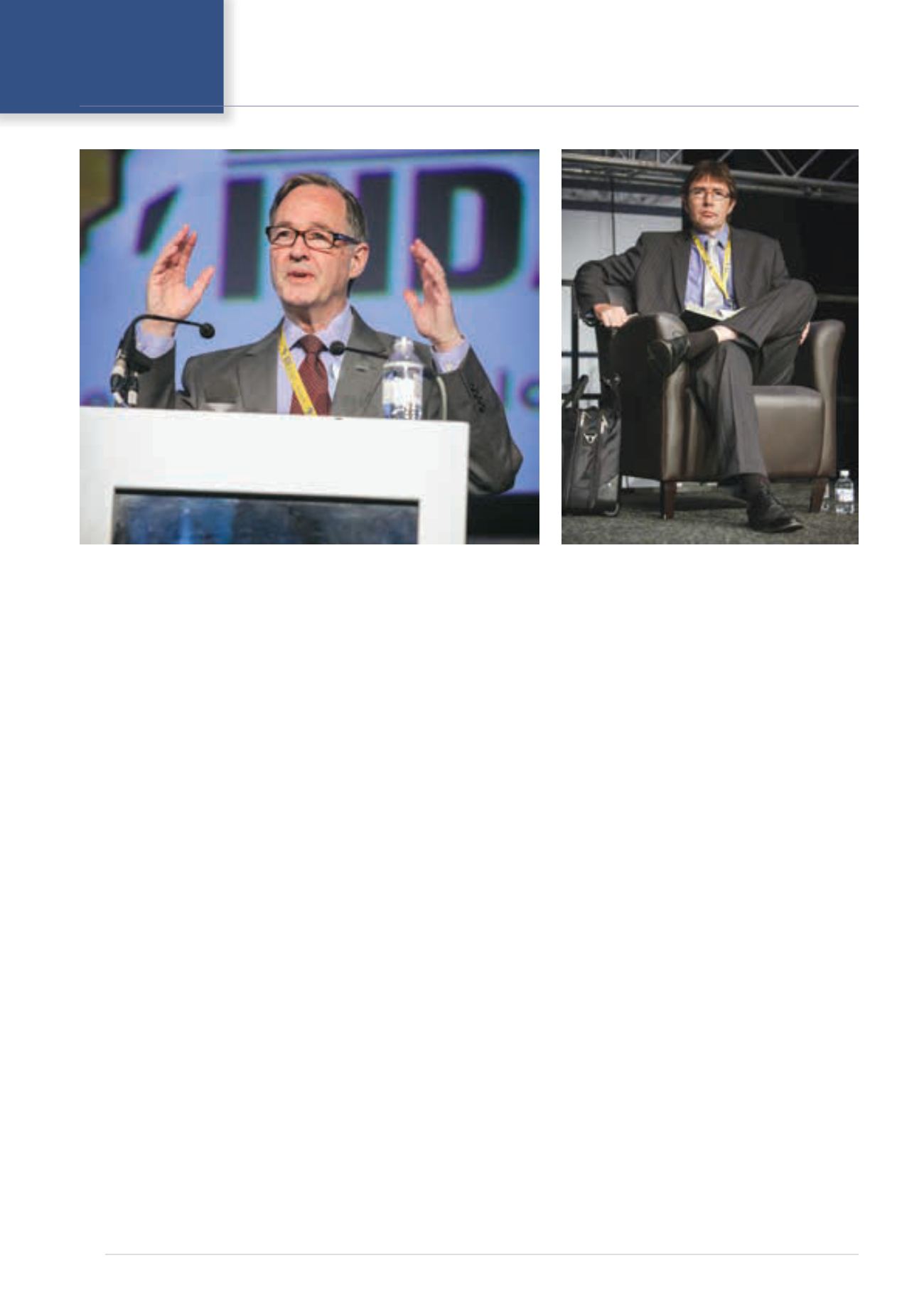
34
MODERN MINING
February 2014
EVENTS
Above:
Economist David
Hale from the US, always
a popular speaker at the
Mining Indaba.
Right:
Roger Baxter, COO
of the Chamber of Mines of
South Africa, participated
in a keynote panel on the
outlook for African mining.
generating industry – had now ousted South
Africa as sub-Saharan Africa’s leading eco-
nomic power. Controversially, he suggested
that Nigeria represented Africa’s future and
South Africa its past.
Moving on to other speakers, the
“reputa-
tional degradation”
of the mining industry
was discussed by
Khanyisile Kweyama
, an
Executive Director of Anglo American, in a
well argued and persuasive keynote presen-
tation. While she acknowledged that mining
had left many unwelcome environmental and
health legacies for many communities and
employees, she said the industry nevertheless
had a highly positive story to tell. She pointed
out that while mining disturbed less than 1 %
of the earth’s surface, it contributed more than
40 % of its economic activity.
Turning to the specific contributions of Anglo
American, she said it was the largest mining
company in Southern Africa with over 95 000
employees and contractors.” We are one of the
largest contributors to the South African fis-
cus – in 2012, our South African companies
generated direct and indirect taxes of over
R14 billion to help address the evil triplets
of poverty, inequality and unemployment.
In addition, in 2012 alone, Anglo American’s
South African business units spent R777 mil-
lion directly on mine community initiatives,
covering healthcare, education and infrastruc-
ture development. Between 2008 and 2012, the
total was R2,6 billion,” she said.
Referring to the challenges facing miners,
she said these included deposits at greater
depths and more remote locations, declining
ore grades, declining productivity, rapidly ris-
ing costs of inputs such as energy, water, fuel
and machinery and operating models that were
years behind other industries.
As always at theMining Indaba,
Australia
was
represented by a sizeable contingent, including
Colin Barnett
, Premier of Western Australia,
who was a keynote speaker. Outlining the scale
of Australia’s involvement in African mining,
he said there were about 236 Australian mining
companies operating in Africa. “Of these, 168
(or over 70 per cent) are Western Australian,”
he observed. “These Western Australian com-
panies are active in 807 projects spread across
33 of the 54 African countries. The range of
minerals is extensive covering iron ore, gold,
uranium, other base metals, and rare earths,
mineral sands and coal.
“Australian mining companies are significant
employers in Africa, with the majority of proj-
ects mainly staffed by locals, providing secure
and well paid jobs for thousands of Africans,”
he told delegates. “Many Australian companies
involved in African mining projects actually
have more African employees than Australian.
An example is Ausdrill, which has 2 600
employees in Africa, 2 400 of which are local,
while it has 1 900 employees in Australia.”
On the subject of
sovereign risk
, Barnett
noted that the phenomenon was not confined
to developing nations. “Australia has had a
recent experience of a Mineral Resource Rent
Tax being imposed by the national government
on top of existing state royalties,” he told his
audience. “This new tax applies only to iron
ore and coal. As China is the major buyer of


